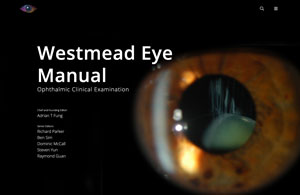11 Rhegmatogenous Retinal Detachment – Scleral Buckle
11.2 Endoillumination Assisted Scleral Buckling (Chandelier Buckle)
Despite its long track record, scleral buckling is being employed less commonly and accounts for only a small portion of the vitreoretinal fellowship training experience.[1] Scleral buckling is conventionally performed under indirect ophthalmoscopic viewing. A variation to this technique, initially described by Nam et al.,[2] allows for scleral buckle placement at the operating microscope using chandelier illumination and a noncontact or contact wide-angle microscopic viewing system in conjunction with cryopexy or laser photocoagulation. Potential advantages include improved visualization of the peripheral retina, direct viewing during external drainage of subretinal fluid, facility in conversion to pars plana vitrectomy, enhanced teaching capabilities, and improved ergonomics.[3] Disadvantages include introducing an intraocular step in a procedure that would otherwise be limited to outside of the eye, risk of lens damage in phakic eyes as well as reduced maneuverability and surgical field-of-view when using the operating microscope for the buckling procedure.
Bakri SJ, Alniemi ST, Chan RV. Experiences of vitreoretinal surgery fellows in the United States. Retina. 2013;33(2):392-396.
Nam KY, Kim WJ, Jo YJ, Kim JY. Scleral buckling technique using a 25-gauge chandelier endoilluminator. Retina. 2013 Apr;33(4):880-2.
Assi A, Abdelmassih Y, El-Khoury S. Endoillumination-Assisted Modified Scleral Buckling. Retina. 2018;38(2):320-324.
The indications, contraindications, and commonly used buckling materials are the same as those used for conventional scleral buckling as described in Chapter 11.1 Rhegmatogenous Retinal Detachment. In addition to the conventional equipment list, a chandelier light e.g. 25-gauge (Figure 11.2.1) and a wide angle viewing system are needed along with a 7-0 vicryl or 6-0 gut suture for sclerotomy closure. Retinopexy can be performed with cryotherapy, indirect laser, or a lighted endolaser.
Similar to a conventional scleral buckling procedure, pre-operative localization of breaks with scleral depression is the critical first step in achieving a successful scleral buckle.
The conjunctival peritomy, dissection of Tenon’s capsule, and isolation of the rectus muscles may be done externally or with the aid of the operating microscope in the same fashion as for a conventional scleral buckle. Next the sclera is inspected for ectasia.
1. Localize the Retinal Detachment and Breaks
Once the decision has been made to proceed with the procedure, the chandelier is placed in the pars plana. It is recommended to place the chandelier 90 degrees away from the main site of pathology for optimal visualization in a phakic eye and 180 degrees away from the main site of pathology in a pseudophakic eye. The globe can then be manipulated by holding the rectus muscles and the chandelier light. The periphery is inspected using scleral depression by directing the chandelier light towards areas of interest. Care should be taken in phakic patients not to aggressively move the chandelier probe in an anterior direction to avoid trauma to the crystalline lens.
Note
The chandelier may become warm while its light is on. If removed from the trocar, it may become warped and difficult to reinsert into the trocar. Thus, when not in use and removed from the globe, it should be turned off
2. Treat the Retinal Breaks
Once localized, breaks can be treated with cryopexy or an illuminated endolaser. Treatment may be observed directly through the operating microscope. In the event that endolaser is used, care should be taken to avoid excess manipulation or posterior movement. In our experience, cryopexy is the preferred treatment method, however in very posterior breaks or in breaks located under extraocular muscles, access may be challenging with the cryo probe, and an endolaser is an alternative option. Care should be taken to manipulate the endolaser minimally as to avoid excessive vitreoretinal traction. A third option is to perform retinopexy with an indirect laser after drainage of subretinal fluid.
3. Mark the Breaks and Place the Buckling Elements
Breaks can be marked under direct visualization through the operating microscope. Buckling elements can then be fixated in the same manner as a conventional approach.
Previous
11.1 Scleral Buckle
All rights reserved. No part of this publication which includes all images and diagrams may be reproduced, distributed, or transmitted in any form or by any means, including photocopying, recording, or other electronic or mechanical methods, without the prior written permission of the authors, except in the case of brief quotations embodied in critical reviews and certain other noncommercial uses permitted by copyright law.
Westmead Eye Manual
This invaluable open-source textbook for eye care professionals summarises the steps ophthalmologists need to perform when examining a patient.

